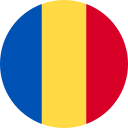Animale - Anatomia peștilor, a insectelor etc.
Aici veți învăța câteva cuvinte legate de anatomia peștilor, insectelor etc. în engleză, cum ar fi "înotătoare", "antenă" și "tentacul".
Revizuire
Fișe de studiu
Ortografie
Chestionar

the front part of an insect's body that contains the eyes, antennae, mouth, and other sensory parts, and is connected to the rest of the body by a small joint called the neck

cap, capul
the posterior or rear section of an insect or other arthropod, following the thorax
the middle part in the body of an insect between the head and the abdomen that bears the limbs or wings

torace, piept
one of a pair of jointed sensory appendages on the head of insects, crustaceans, or similar organisms, often used to detect touch, taste, or movement
a type of eye found in some invertebrates that consists of a single lens

ochi simplu, ocel
a complex visual organ with multiple lenses found in insects and crustaceans

ochi compus, ochi cu multiple lentile
any of the pair of tentacles of an insect or crustacean that help them to sense touch or taste

antenă, palp
fine, delicate strands produced by a spider's web, often seen floating in the air or clinging to surfaces

fir de pânză de păianjen, pânză ușoară
any of the sharp curved organs of an arthropod or insect, such as a crab, lobster, etc.

clește, pincă
a long, tubular feeding organ found in many insects, such as butterflies, moths, and flies, which is used to suck up nectar, other liquids, or in some cases, blood

trompă, proboscidă
one of the repeating divisions of an insect's body, often including paired appendages
a sharp, pointed organ found in certain animals that is used to inject venom or deliver a painful sting

ac, organ ascuțit
a round organ on the body of some animals that helps them stick to a surface

ventuză, organ de sucțiune
a stiffening rib or support structure in the wing of an insect
the internal bony structure of an animal that gives it form and supports its weight

endoschelet, schelet intern
the hard outer covering that supports the body of an animal, such as an arthropod

exoschelet, carapace
a thin flat membrane of the body of many sea creatures, used for swimming and keeping balance

înotătoare, înotătoare dorsală
a toxic substance produced and secreted by certain animals, typically used for defense or hunting
any of the various flexible limbs of an animal, especially an invertebrate, which enable it to move or hold things

tentacul, apendice
an organ of a fish or an amphibian through which it can obtain the oxygen that is dissolved in water

branhie, organ respirator al peștilor
a paired, wing-like appendage located on the sides of the body of fish, used for stability, maneuverability, and generating lift during swimming

înotătoare pectorală, înotătoare toracică
the rectum or external opening in some animals, such as a fish, bird, etc., through which waste is passed

cloacă, orificiul anal
the foremost segment of the thorax in insects and other arthropods

protorace, segmentul cel mai din față al toracelui
the middle segment of the thorax in animals, typically bearing the middle legs and forewings in insects

mezotorace, segmentul mijlociu al toracelui
the posterior of the three segments that make up the thorax, located behind the mesothorax and typically bearing the hind legs and the hindwings in insects

metatorace, segmentul posterior al toracelui
the anterior wing of an insect, typically larger and more developed than the hindwing, that plays a key role in flight

aripa anterioară, aripa principală
the posterior pair of wings in insects, located on the metathorax, and typically used for balance, maneuverability, and gliding during flight

aripa posterioară, aripa posterioară
the last section of the digestive tract, which includes the colon, rectum, and cloaca

intestin posterior, ultima secțiune a tractului digestiv
(anatomy) each of the pair of tubes in the female body through which eggs pass to the ovary

oviduct, trompa uterină
the specialized structures located around the mouth used for feeding, grooming, and other related functions

parte bucală, structură bucală
a protective covering or lid-like structure that can be found in various organisms, such as fish, snails, and some insects

opercul, capac protector
a sensory system found in fish and some aquatic animals that detects changes in water pressure

linie laterală, sistem senzorial lateral
a prominent fin located on the back of fish and certain marine mammals, providing stability

înotătoare dorsală, înotătoarea din spate
a small, fleshy fin located on the back of some fish, typically behind the dorsal fin

înotătoare adiposă, înotătoare grasă
the posterior part of a fish or aquatic animal's body, composed of fins that provide propulsion and maneuverability

înotătoarea caudală, coada de pește
a light-emitting organ found in certain animals, such as deep-sea fishes and cephalopods, which is used for communication, camouflage, or attracting prey or mates

fotofor, organ luminescent
a pair of paired fins located on the ventral side of a fish's body which aid in stability, maneuverability, and sometimes reproductive functions

înotătoare pelviană, înotătoare ventrală











